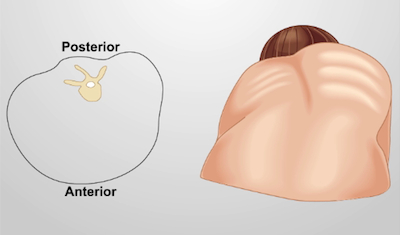呼吸試験 i: 検査と触診
概要
ソース: Suneel Dhand、MD、医師、内科、ベス イスラエス ディーコネス メディカル センターに参加
息切れを主訴と呼吸器系の障害は、外来と入院患者の評価のための最も一般的な理由です。呼吸問題に最も明らかな目に見える手がかりは、患者は呼吸困難、速い呼吸、チアノーゼなどの兆候を表示するかどうかになります。臨床状況では緊急の注意と酸素療法が常に必要です。
他のボディ システムの病理とは異なり多くの肺疾患、慢性閉塞性肺疾患 (COPD)、喘息、肺炎などを含む慎重な臨床検査だけで診断できます。これは包括的な検査と触診から始まります。覚えておいてその内の非緊急事態患者の完全な履歴が喫煙している露出履歴に既に実施し得る重要な洞察力 (例えば、)、特定の肺疾患に上昇を与えることができます。このような歴史と、検査が行われる身体所見を確認できます。
手順
1. 試験のための準備
- 患者を調べる前に石鹸と水で十分に手を洗ってたり、抗菌洗浄できれいな。
- 肺の検査を実行することを患者に説明します。
2. 患者のポジショニング
- 患者は (女性の下着の上を維持して、時に 1 つそれぞれの胸腔に公開) 腰まで服を着ていることを確認します。
- 30-45 度の角度で診察台に患者を置き、右側から患者へのアプローチします。肺の後方を確認する必要があります患者ベッドの端に座ったり前かがみ。
3. 一般的な観測
- まず患者の一般的な一見があります。この時点で、患者さんのバイタル サインが既に取得されています。患者さんの呼吸率および酸素飽和状態に特に注意を払います。
- 明らかな呼吸困難の兆候に注意してください。これらが含まれて。
- 高速呼吸 (通常の呼吸は 1 分あたり 14-20 呼吸)
- チアノーゼ (皮膚や粘
申請書と概要
スキップ先...
このコレクションのビデオ:

Now Playing
呼吸試験 i: 検査と触診
Physical Examinations I
157.3K 閲覧数

身体検査の一般的なアプローチ
Physical Examinations I
117.5K 閲覧数

観察・検査
Physical Examinations I
95.0K 閲覧数

触診
Physical Examinations I
84.5K 閲覧数

パーカッション
Physical Examinations I
101.7K 閲覧数

聴診
Physical Examinations I
62.2K 閲覧数

身体検査中に患者の服装の適切な調整
Physical Examinations I
83.4K 閲覧数

血圧測定
Physical Examinations I
108.7K 閲覧数

バイタル サインの測定
Physical Examinations I
114.9K 閲覧数

呼吸試験 II: 打診と聴診
Physical Examinations I
212.9K 閲覧数

心臓試験 i: 検査と触診
Physical Examinations I
176.6K 閲覧数

心臓試験 II: 聴診
Physical Examinations I
140.1K 閲覧数

心臓試験 III: 異常な心臓の音
Physical Examinations I
91.9K 閲覧数

末梢血管検査
Physical Examinations I
68.8K 閲覧数

連続波ドップラーを使用して末梢血管検査
Physical Examinations I
38.6K 閲覧数
Copyright © 2023 MyJoVE Corporation. All rights reserved




